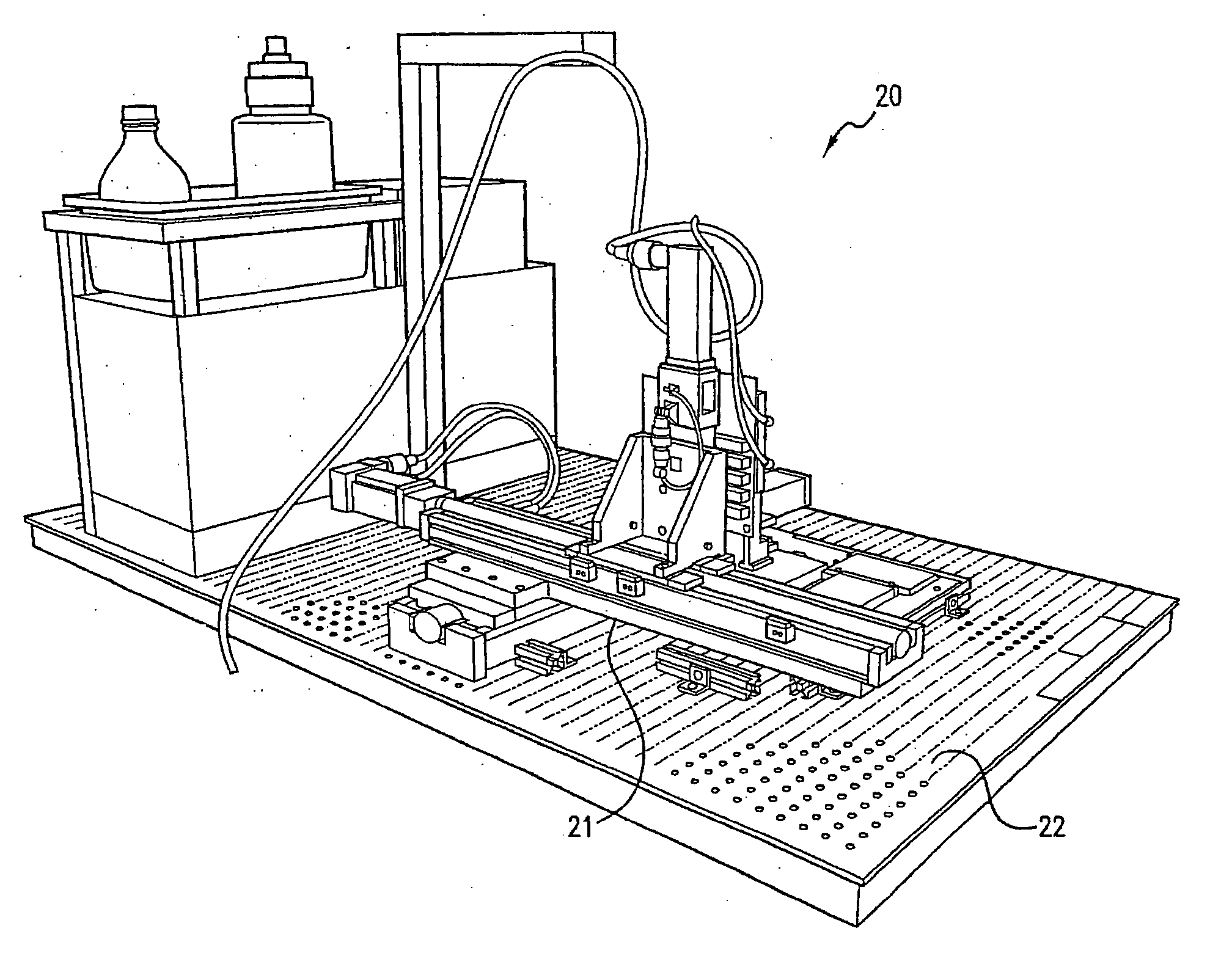Method for preparation of microarrays for screening of crystal growth conditions
- Summary
- Abstract
- Description
- Claims
- Application Information
AI Technical Summary
Benefits of technology
Problems solved by technology
Method used
Image
Examples
example 1
[0086] Recipe solutions were prepared by the system shown in FIG. 1 using a statistical design of experiment methodology that combined ratios of ingredients from 18 types of bulk solutions. These solutions contained different buffers, salts, crystallization agents, and surfactants. The recipe solutions were prepared in 1.5 milliliter wells in 96 well plate and then sealed with tape. The ingredients were allowed to mix by diffusion over 24 hours, and then the recipe solutions were re-formatted into 384 plates. The recipe plates were placed on the deck of the dispenser shown in FIG. 7, a concanavalin-A protein solution was placed on another plate on the deck, and an empty crystallization screen plate containing 384 wells was also placed on the deck. The dispenser, having a plurality of tips for aspirating and dispensing of the protein and recipe solutions, automatically prepared an array of crystallization experiments. Each well contained a unique recipe and the same protein solution,...
example 2
[0087] An experiment using the same conditions, solutions, and apparatuses was repeated with thaumatin instead of concanavalin-A. Several wells produced very large crystals, as shown in FIGS. 8 and 9, where the droplet diameters were typically 500 micrometers.
example 3
[0088] A series of experiments using other proteins were conducted using the methods and devices of the present invention. The proteins listed in this example include both known and unknown proteins. The 2g1-1a and 9c9 proteins are unknown proteins from the NIH Structural Genomics project. 4g49a and peIAE are unknown proteins provided by other researchers. The act—2 protein is a chymotrypsinogen. The W539A protein is a chitinase from an unknown organism. The pf glutamate dehydrogenase is a bacterial protein.
[0089] The results of these experiments, carried-out in accordance with the teachings of the present invention, can be seen in FIGS. 10A-O. In FIG. 10A, 2G1-1A was crystallized in 0.1 M Acetate (pH 4.5), 0.693 M NaCl, 12.37% PEGM5000, 0.01 M CaCl2, and 0.05 M Arg-HCl at 4° C. In FIG. 10B, 2G1-1A was crystallized in 0.1 M Tris (pH 8.5), 0.2 M NaOAc, and 30% PEG4000 at 22° C. In FIG. 10C, 2g1-1a was crystallized in 0.1 M HEPES (pH 7.5), 0.289 M NaCl, 23.53% PEG4000, 6% glycerol, 0...
PUM
| Property | Measurement | Unit |
|---|---|---|
| Time | aaaaa | aaaaa |
| Volume | aaaaa | aaaaa |
| Volume | aaaaa | aaaaa |
Abstract
Description
Claims
Application Information
 Login to View More
Login to View More - R&D
- Intellectual Property
- Life Sciences
- Materials
- Tech Scout
- Unparalleled Data Quality
- Higher Quality Content
- 60% Fewer Hallucinations
Browse by: Latest US Patents, China's latest patents, Technical Efficacy Thesaurus, Application Domain, Technology Topic, Popular Technical Reports.
© 2025 PatSnap. All rights reserved.Legal|Privacy policy|Modern Slavery Act Transparency Statement|Sitemap|About US| Contact US: help@patsnap.com



